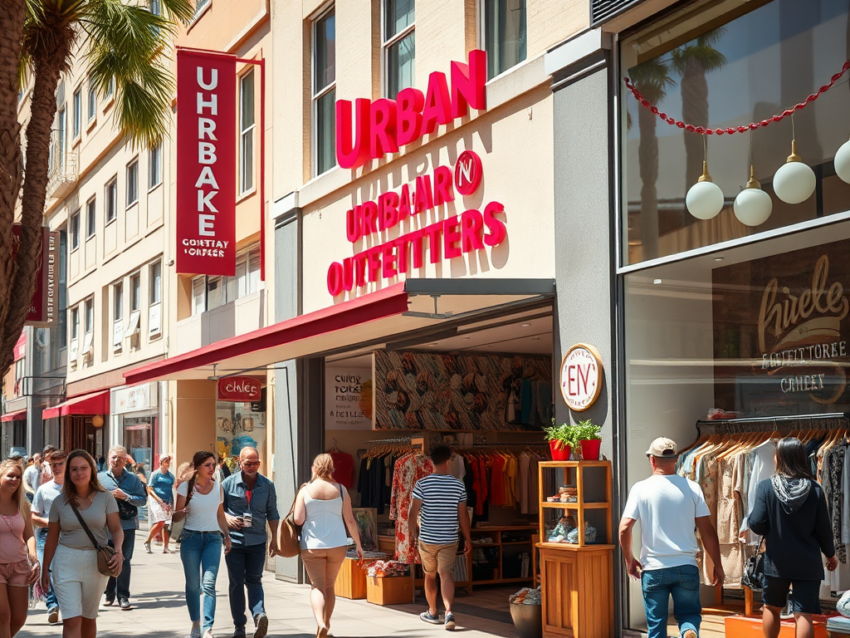Urban Outfitters has carved out a unique niche in the bustling retail landscape. Its blend of contemporary fashion, vintage-inspired pieces, and quirky home decor has attracted a diverse demographic. But have you ever wondered about the backbone of this brand? Who holds the reins behind the scenes? Understanding the ownership of Urban Outfitters not only provides insight into its intriguing business model but also sheds light on how it has managed to remain relevant over the years. In this article, we’ll delve into the ownership structure, the related brands, and what makes Urban Outfitters a standout name in retail.
The Parent Company: Urban Outfitters, Inc.

Urban Outfitters, Inc. is the parent company that oversees multiple brands, working diligently to create a cohesive yet varied retail experience. Founded in the 1970s, Urban Outfitters, Inc. has evolved dramatically since its inception. The company’s strategy has always revolved around understanding consumer desires and cultural trends. As a publicly traded entity on the NASDAQ under the ticker symbol URBN, this company plays a pivotal role in the broader retail sector. Its parent company status allows it to leverage operational synergies and drive innovation across its brands. To truly grasp the scope of Urban Outfitters, Inc., it is essential to look into its history and market positioning.
A Brief History of Urban Outfitters

Urban Outfitters began its journey in an era marked by individuality and self-expression. The brand’s founding in 1970 by Scott Belair and Richard Hayne in Philadelphia capitalized on the cultural trends of the time. Initially starting as a small shop selling vintage clothes, Urban Outfitters quickly grew into a national retailer. Over the years, the brand has adeptly adapted to shifts in consumer preferences, maintaining its core ethos of creativity and eclecticism. Today, Urban Outfitters is recognized not only for its retail accomplishments but also for its role in shaping lifestyle trends. From clothing to home decor, Urban Outfitters has truly become a one-stop shop for all things stylish.
Other Brands Under Urban Outfitters, Inc.
Urban Outfitters, Inc. manages a diverse portfolio of brands that resonate with various consumer segments. Here’s a brief overview of some of the key brands:
- Anthropologie – A lifestyle brand focusing on women who appreciate artistry and design.
- Free People – Emphasizing bohemian styles, catering to free-spirited individuals.
- Terrain – Specializing in outdoor living and gardening products that connect consumers with nature.
These brands are strategically positioned to address different consumer needs, getting Urban Outfitters, Inc. a significant market share.
| Brand | Target Audience | Product Offering |
|---|---|---|
| Urban Outfitters | Young adults | Fashion and home goods |
| Anthropologie | Women aged 30+ | Clothing, accessories, and home decor |
| Free People | Millennials | Bohemian fashion and lifestyle products |
| Terrain | Garden enthusiasts | Garden supplies and outdoor living items |
Corporate Structure and Leadership
The corporate structure of Urban Outfitters, Inc. is a key factor in its operational success. A well-defined hierarchy allows for efficient decision-making and agile responses to market trends. At the helm of this organization is a leadership team that consists of visionaries with extensive experience in retail and consumer behavior. Their focus has been on innovation while maintaining a pulse on cultural shifts that affect purchasing behaviors. Great examples include the integration of technology into retail strategies and commitment to sustainability, which has resonated well with today’s socially conscious consumers.
Market Position and Growth Strategies
Urban Outfitters, Inc. enjoys a significant market presence, thanks in large part to its multi-brand strategy. The company employs a diverse range of growth strategies, focusing on both geographic expansion and product innovation. An example of their proactive growth strategy includes expanding their online offerings to reach more tech-savvy customers. Such strategies ensure that Urban Outfitters remains competitive, tapping into emerging trends and consumer preferences. Here are some key growth strategies employed by Urban Outfitters, Inc.:
- Expansion of online shopping platforms.
- Incorporation of sustainable practices into the supply chain.
- Collaboration with independent designers to offer exclusive pieces.
Conclusion
Urban Outfitters is owned by Urban Outfitters, Inc., a parent company that operates several notable brands such as Anthropologie and Free People. This diverse corporate structure enables the company to cater to various market segments and consumer preferences effectively. With a commitment to innovation and cultural awareness, Urban Outfitters, Inc. positions itself well in the competitive retail landscape, ensuring long-term growth and success.
Frequently Asked Questions
- Who founded Urban Outfitters?
Urban Outfitters was founded in 1970 by Scott Belair and Richard Hayne in Philadelphia. - What other brands are owned by Urban Outfitters, Inc.?
Besides Urban Outfitters, the company owns brands such as Anthropologie, Free People, and Terrain. - Where is Urban Outfitters headquartered?
Urban Outfitters, Inc. is headquartered in Philadelphia, Pennsylvania. - What types of products does Urban Outfitters sell?
Urban Outfitters sells a variety of products including clothing, home decor, and beauty items. - Is Urban Outfitters, Inc. publicly traded?
Yes, Urban Outfitters, Inc. is publicly traded on the NASDAQ under the ticker symbol URBN.
